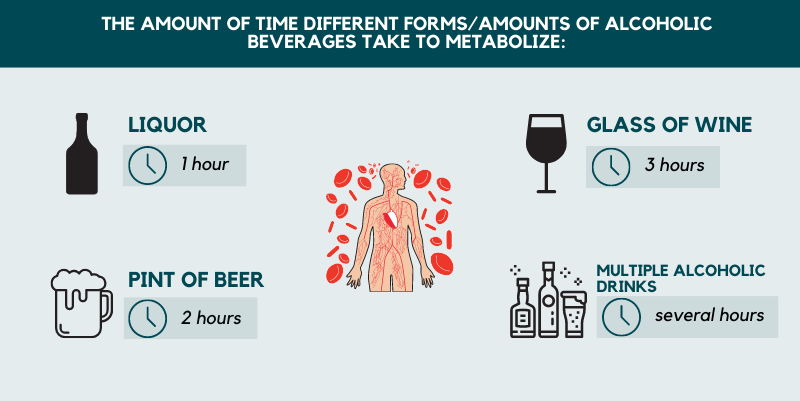Unravel the mystery of alcohol metabolism and discover the answer to the age-old question: How many beers until you’re drunk?

Image courtesy of Airam Dato-on via Pexels
Table of Contents
Have you ever wondered how many beers it takes to get drunk? The answer to this seemingly simple question is not as straightforward as you might think. Dive into our comprehensive blog post as we explore the science behind alcohol metabolism, individual tolerance levels, and various factors that influence intoxication.
Understanding Alcohol Metabolism
alcohol metabolism is a complex process that occurs in the liver. When you consume alcohol, your body breaks it down into acetaldehyde and then into acetate. This process is primarily carried out by enzymes in the liver, such as alcohol dehydrogenase and aldehyde dehydrogenase.
Factors such as age, gender, weight, and genetics can all influence how quickly your body metabolizes alcohol. For example, younger individuals tend to metabolize alcohol faster than older individuals due to differences in enzyme activity. Additionally, men typically have higher levels of alcohol dehydrogenase, allowing them to metabolize alcohol more quickly than women.
Individual Tolerance Levels
Alcohol tolerance refers to the body’s ability to handle increasing amounts of alcohol without experiencing severe intoxication. Tolerance levels can vary significantly among individuals, with regular alcohol consumption leading to an increase in tolerance over time.
There is also a phenomenon known as “reverse tolerance,” where individuals may become more sensitive to alcohol even with lower consumption levels. This can make it challenging to predict how many beers it takes to get drunk, as tolerance levels can fluctuate based on various factors.
Factors Influencing Intoxication
The alcohol content of different types of beer plays a significant role in determining how many beers it takes to get drunk. Beers with higher alcohol by volume (ABV) percentages will lead to quicker intoxication than lower ABV beers. It’s essential to be aware of the alcohol content of the beer you are consuming and drink responsibly.

Image courtesy of floridarecoverygroup.com via Google Images
Other factors that can influence intoxication levels include food consumption, hydration, and overall health. Eating a meal before drinking alcohol can slow down the absorption of alcohol into the bloodstream, potentially mitigating the effects of intoxication. Staying hydrated can also help your body process alcohol more efficiently.
Mental state, emotions, and environment can also play a role in how quickly someone gets drunk. Stress, anxiety, and fatigue can all impact how alcohol affects the body. Additionally, the setting in which alcohol is consumed can influence how quickly someone becomes intoxicated. It’s essential to be mindful of these factors and make informed decisions about drinking.
Conclusion
Understanding how many beers it takes to get drunk is not a simple calculation. It involves a complex interplay of alcohol metabolism, individual tolerance levels, and various influencing factors. While it can be tempting to test your limits, it’s crucial to drink responsibly and know when to stop.
By demystifying alcohol metabolism and exploring the factors that influence intoxication, we can make more informed choices about alcohol consumption. Remember to always drink in moderation, be aware of your limits, and prioritize your health and well-being above all else.
FAQ
Question 1: How does alcohol metabolism vary between individuals?
Answer 1: Alcohol metabolism can vary based on factors such as age, gender, weight, and genetics. Younger individuals tend to metabolize alcohol faster, and men typically have higher levels of alcohol dehydrogenase, allowing them to process alcohol more quickly than women.
Question 2: What role does alcohol tolerance play in how many beers it takes to get drunk?
Answer 2: Alcohol tolerance refers to the body’s ability to handle increasing amounts of alcohol. Tolerance levels can vary among individuals and can be influenced by regular alcohol consumption. However, even with high tolerance levels, it’s essential to drink responsibly and be mindful of your limits.
Question 3: How does the alcohol content of beer impact intoxication levels?
Answer 3: The alcohol by volume (ABV) percentage of beer is crucial in determining intoxication levels. Beers with higher ABV percentages will lead to quicker intoxication than lower ABV beers. It’s important to be aware of the alcohol content of the beer you are consuming and adjust your intake accordingly.
Question 4: What are some factors that can influence how quickly someone gets drunk?
Answer 4: Factors such as food consumption, hydration, mental state, emotions, and environment can impact how quickly someone becomes intoxicated. Eating a meal before drinking, staying hydrated, and being mindful of stress levels and fatigue can all play a role in how alcohol affects the body. It’s important to consider these factors when consuming alcohol.
Generated by Texta.ai Blog Automation
Leave a Reply